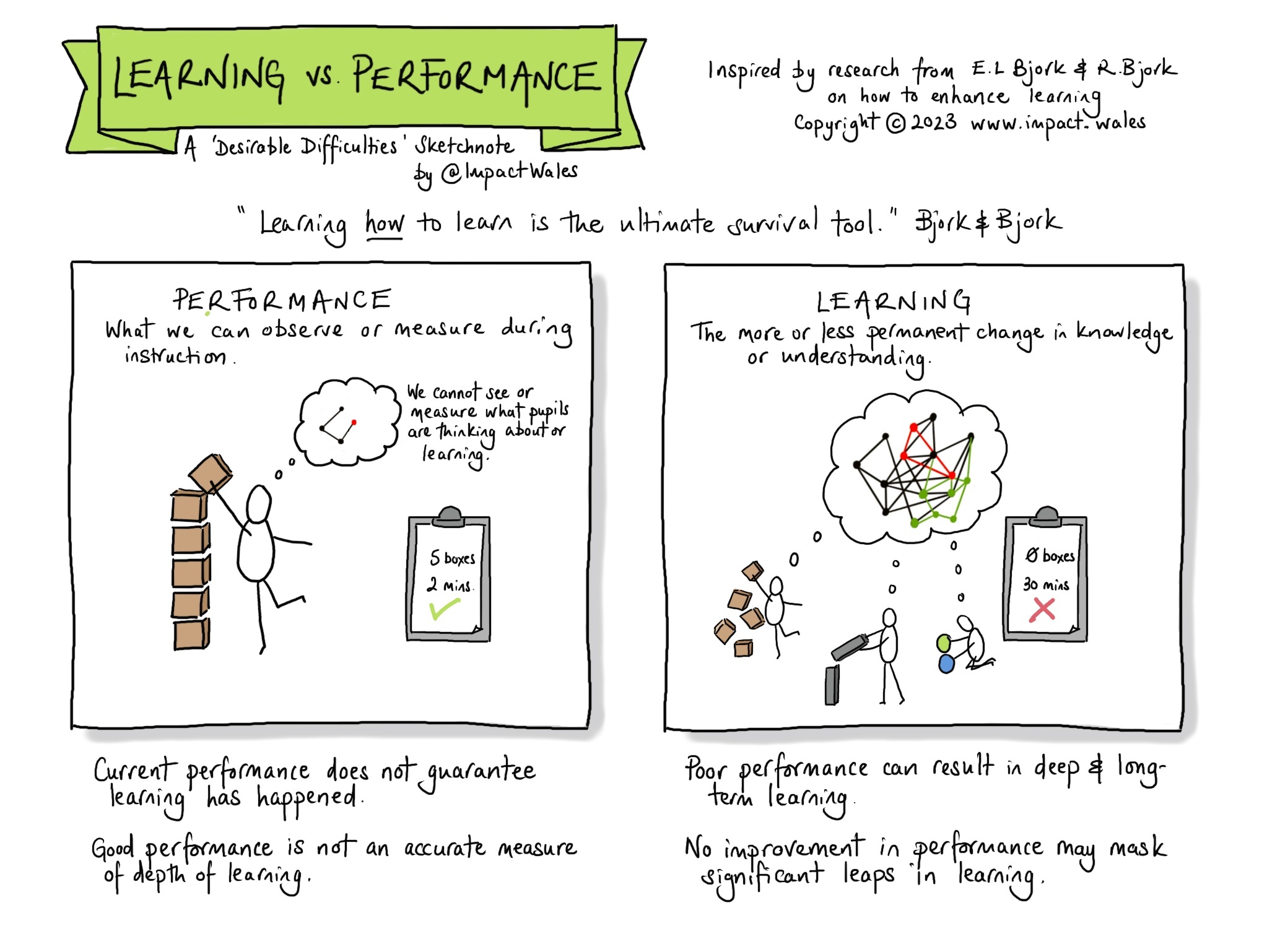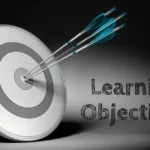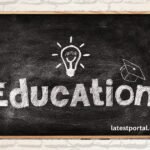Learning has taken place if there’s a noticeable improvement in knowledge, skills, or behavior. Evidence includes better performance or understanding.
Effective learning manifests through measurable changes in a person’s abilities or behavior. Observing improvements in test scores, practical applications, or problem-solving skills can indicate successful learning. Feedback from assessments, real-world application, and consistent performance enhancement are key indicators. These elements help educators and learners alike gauge the effectiveness of educational methods.
Tracking progress through various metrics ensures an accurate evaluation of learning outcomes. Recognizing these signs helps in adjusting teaching techniques to maximize learning potential. Understanding how to identify learning progress is crucial for continuous improvement in educational environments.

Credit: twitter.com
Observable Behavior Changes
Understanding if learning has occurred can be tricky. One key indicator is observable behavior changes. These changes are visible and measurable. They offer tangible proof of learning.
New Skills Demonstrated
When someone learns, they often show new skills. These skills might be in areas like:
- Problem-solving
- Communication
- Technical abilities
For example, a child who has learned to tie shoes will show that skill. They no longer need help. This is a clear sign of learning. Teachers can also see new skills in the classroom. Students might demonstrate better reading or math abilities. These are clear, observable changes.
Improved Performance
Another sign of learning is improved performance. This can be seen in various ways:
| Area | Improvement |
|---|---|
| School | Higher test scores |
| Sports | Better game skills |
| Work | Increased productivity |
For instance, a student who has studied hard may score higher on tests. An athlete who practices a new technique may perform better in games. These improvements show that learning has taken place.
In the workplace, employees might complete tasks faster. Their quality of work might improve. These are signs of learning and growth.

Credit: www.cambridge.org
Enhanced Knowledge Retention
Enhanced knowledge retention is key to effective learning. This process ensures that learners can recall and apply what they have learned. But how do you know if learning has taken place? By focusing on specific indicators, you can gauge the effectiveness of the learning experience.
Recall Of Information
One of the main signs of enhanced knowledge retention is the ability to recall information. This means remembering facts, concepts, and details accurately.
- Memory Tests: Quizzes and flashcards can check recall.
- Repetition: Frequent review sessions help reinforce memory.
- Active Engagement: Discussions and Q&A sessions boost recall.
Being able to recall information shows that the learner has understood and retained the material. This is a clear indicator of effective learning.
Application In Real-world Scenarios
Another way to know if learning has taken place is by applying knowledge in real-world scenarios. Here’s how you can assess this:
- Problem-Solving: Can the learner solve real-life problems using the knowledge?
- Project Work: Are they able to complete projects that require applying what they have learned?
- Role-Playing: Simulating real-world situations to test application skills.
Applying knowledge in real-world scenarios is a strong indicator of enhanced knowledge retention. It shows that the learner can use what they have learned effectively. Enhanced knowledge retention is crucial for effective learning. By focusing on recall and application, you can ensure that learning has truly taken place.
Increased Engagement
Increased engagement is a strong sign of learning. Engaged learners show interest and curiosity. They participate actively and ask questions.
Active Participation
Active participation means learners take part in discussions. They share ideas and ask for feedback. This shows they are processing information.
- They answer questions.
- They join group activities.
- They complete tasks on time.
Inquisitive Questions
Inquisitive questions show that learners are thinking deeply. They want to understand the subject better. They ask questions that lead to further exploration.
| Question Type | Example |
|---|---|
| Clarifying Questions | What does this term mean? |
| Exploratory Questions | How does this concept apply to real life? |
| Probing Questions | Why do you think this happened? |
Positive Attitude Shifts
Identifying if learning has taken place often involves observing positive attitude shifts. Changes in how a person feels and thinks reveal much. Below are some key indicators that highlight these attitude shifts.
Increased Motivation
Increased motivation is a clear sign of learning. Learners show more interest in subjects they once found dull. They spend more time on tasks and seek out further information. This enthusiasm can be contagious, inspiring others around them.
| Before Learning | After Learning |
|---|---|
| Procrastination | Proactive Engagement |
| Lack of Interest | Curiosity and Enthusiasm |
Open-mindedness
Open-mindedness is another indicator of learning. Learners become more willing to hear different perspectives. They are ready to accept new ideas and approaches. This shift can lead to improved problem-solving skills and better collaboration.
- Willing to try new methods
- Accepts constructive criticism
- Seeks out diverse viewpoints
Feedback From Peers And Mentors
Feedback is vital in the learning process. It helps to know if learning has taken place. Peers and mentors offer different perspectives. Their insights can highlight strengths and areas for improvement.
Peer Reviews
Peer reviews are a great way to get feedback. They allow learners to see how others view their work. This process can be eye-opening. It can reveal gaps in understanding and areas of strength. Here are some benefits of peer reviews:
- Offers diverse perspectives
- Encourages collaborative learning
- Helps identify strengths and weaknesses
Mentor Assessments
Mentor assessments provide expert insights. Mentors have more experience and can offer deeper feedback. They can guide learners on the right path. This type of feedback is often more detailed.
Key benefits of mentor assessments:
| Benefit | Description |
|---|---|
| Expert Guidance | Mentors provide expert advice and direction. |
| Detailed Feedback | Feedback is often more thorough and specific. |
| Personalized Support | Mentors offer tailored advice to meet individual needs. |

Credit: www.pescholar.com
Self-assessment And Reflection
Self-assessment and reflection play a crucial role in understanding if learning has occurred. These techniques empower individuals to evaluate their own progress and recognize areas for improvement. By engaging in self-assessment and reflection, learners can gain deeper insights into their knowledge and skills.
Personal Insights
Personal insights are valuable indicators of learning. When students reflect on their experiences, they can identify what they have learned and how they have applied it. This helps them see the connection between theory and practice.
- Identify strengths and weaknesses.
- Understand personal learning styles.
- Recognize the effectiveness of study techniques.
Personal insights allow learners to adapt and improve their learning strategies. They become more aware of their cognitive processes and can make informed decisions about their educational journey.
Acknowledgment Of Growth
Acknowledging growth is another critical aspect of self-assessment. Learners must recognize their progress to stay motivated and engaged. Reflection helps them see the incremental improvements they have made over time.
| Before | After |
|---|---|
| Struggled with basic concepts | Mastered advanced topics |
| Low confidence in skills | High confidence in abilities |
| Limited problem-solving abilities | Enhanced critical thinking |
Regular reflection sessions can highlight these areas of growth. This boosts self-esteem and encourages continuous learning. By acknowledging their growth, learners can set new goals and strive for further achievements.
Test Scores And Assessments
Test scores and assessments are key indicators of learning. They help measure the understanding of concepts. Schools and educators use them to gauge student progress.
Improved Grades
Improved grades signify a student’s grasp of the subject. Regular tests and quizzes show this improvement. A student scoring higher each term shows learning. Teachers can also use assignments to track progress. Better grades in assignments reflect understanding. This makes grades a crucial measure of learning.
Standardized Test Results
Standardized tests compare students on a common scale. These tests provide a consistent measure of skills. High scores on standardized tests indicate strong learning. They help identify areas needing improvement. Schools use these results to assess overall performance.
| Test Type | Purpose |
|---|---|
| Quizzes | Check understanding of recent lessons |
| Midterms | Assess knowledge halfway through the term |
| Finals | Evaluate overall understanding of the course |
| Standardized Tests | Compare student performance on a national level |
- Improved grades show concept mastery.
- Standardized tests offer national benchmarks.
- Regular assessments track continuous improvement.
- Assignments reflect comprehension and application.
- Monitor grade improvements over time.
- Use standardized test results for comparison.
- Track performance in regular quizzes and tests.
- Evaluate assignments for deeper understanding.
Practical Application
Understanding if learning has occurred can be challenging. One key method is through practical application. This approach demonstrates the real-world use of newly acquired knowledge. It ensures that learners can perform tasks effectively. Below, we explore two critical aspects: Project Completion and Problem-solving Abilities.
Project Completion
Projects show if learners can apply concepts. They involve creating or doing something tangible. Completing a project means learners have understood the material. They can use their knowledge practically.
Projects can vary in complexity. They can be as simple as a small task or as detailed as a large assignment. The goal is to see if learners can complete tasks from start to finish.
- Building a model
- Writing a report
- Developing a software program
Problem-solving Abilities
Another sign of learning is enhanced problem-solving abilities. Learners should tackle problems using their new knowledge. This shows they understand the concepts deeply.
Problem-solving involves critical thinking. It requires learners to analyze situations. They must come up with effective solutions. This ability is crucial in many real-world scenarios.
| Problem Type | Skills Demonstrated |
|---|---|
| Math Puzzles | Logical reasoning |
| Case Studies | Analytical thinking |
| Technical Issues | Practical application |
Frequently Asked Questions
How Do We Know When Learning Has Taken Place?
Learning has taken place when individuals demonstrate new knowledge or skills. Observable improvements in performance or understanding indicate successful learning.
How Do You Check Learning Has Taken Place?
We check learning through quizzes, assessments, and observing practical application. Feedback and discussions also help gauge understanding.
How Will You Determine Learning Has Occurred?
Learning is determined through assessments, quizzes, and observing improvements in skills and knowledge. Regular feedback sessions also help.
What Are The Indicators That Learning Has Taken Place?
Indicators of learning include improved performance, increased knowledge retention, ability to apply skills, positive feedback, and higher engagement levels.
Conclusion
Recognizing learning involves observing changes in behavior, knowledge, and skills. Celebrate progress by setting measurable goals. Use feedback to guide improvements. Consistent practice and assessment ensure learning retention. Stay committed to continuous growth and development. This approach guarantees effective learning outcomes, benefiting both individuals and organizations.
Keep striving for excellence.
- India All State Medical Colleges List 2024
- Top 20 Ranking MEdical Colleges in India 2024
- What is the Main Idea of Importance of Education: Unlocking Future Success
- How Do You Know If Learning Has Taken Place: Key Indicators
- How to Become an Education Specialist in South Africa: Expert Guide
- What is the Difference between Education And Value Education: Explained
- How Much Does Education Improve Intelligence: Meta-Analysis Findings
- How Do You Know If Learning Objectives were Released: Key Indicators
- How to Measure the Effectiveness of an Educational Program: Proven Methods
- Can Education IRA Be Used for Room And Board?: Uncover the Facts
- What Do You Think the Purpose of Education is: Unlocking Potential
- When is the Best Time to Get an Education Quizlet: Top Tips




















